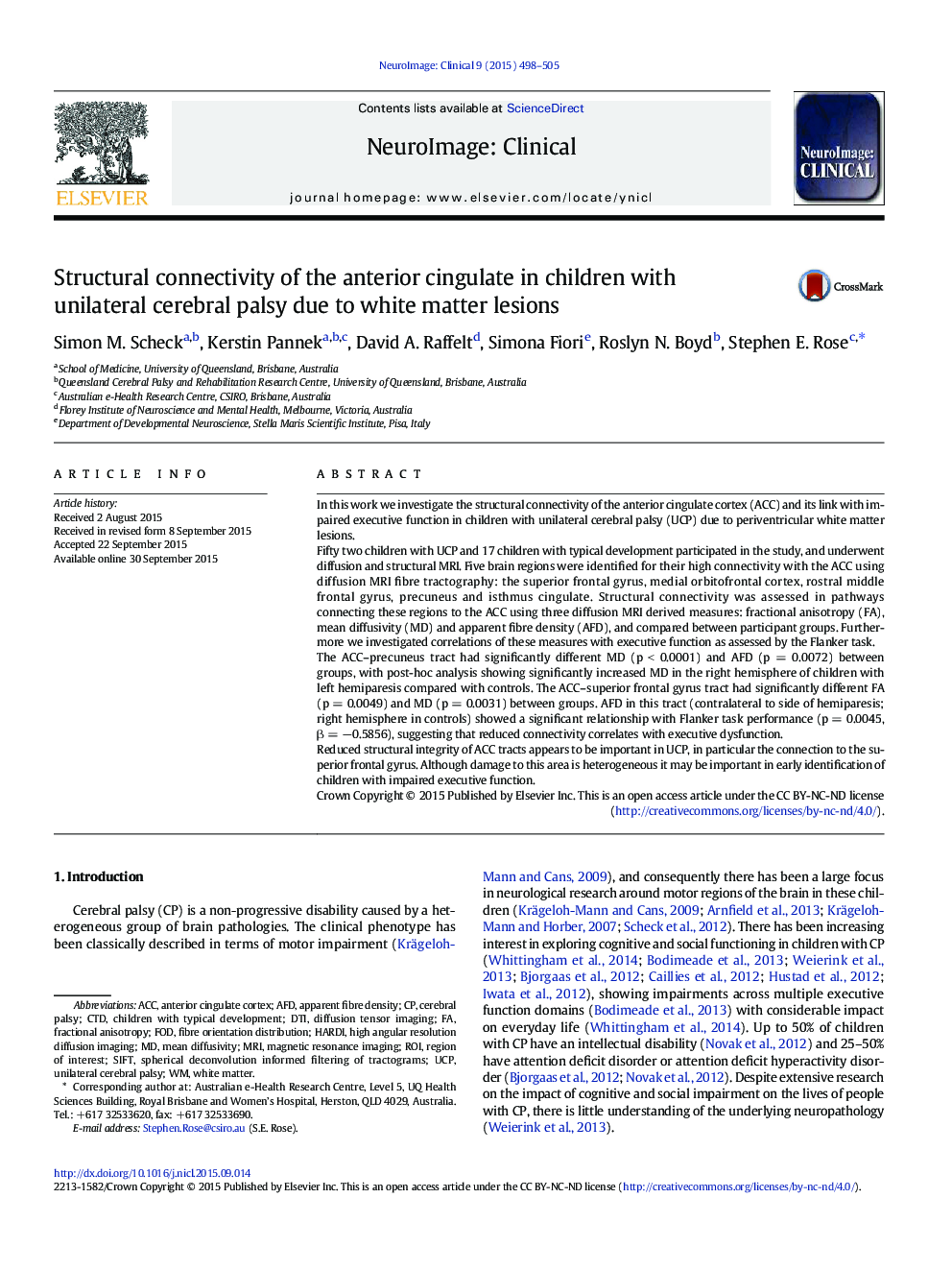| کد مقاله | کد نشریه | سال انتشار | مقاله انگلیسی | نسخه تمام متن |
|---|---|---|---|---|
| 3075198 | 1580958 | 2015 | 8 صفحه PDF | دانلود رایگان |
• Anterior cingulate connectivity is affected in children with PWM lesions.
• This reduced connectivity correlates with impaired executive function.
• AFD provides improved tract-specific analysis compared with DTI.
In this work we investigate the structural connectivity of the anterior cingulate cortex (ACC) and its link with impaired executive function in children with unilateral cerebral palsy (UCP) due to periventricular white matter lesions.Fifty two children with UCP and 17 children with typical development participated in the study, and underwent diffusion and structural MRI. Five brain regions were identified for their high connectivity with the ACC using diffusion MRI fibre tractography: the superior frontal gyrus, medial orbitofrontal cortex, rostral middle frontal gyrus, precuneus and isthmus cingulate. Structural connectivity was assessed in pathways connecting these regions to the ACC using three diffusion MRI derived measures: fractional anisotropy (FA), mean diffusivity (MD) and apparent fibre density (AFD), and compared between participant groups. Furthermore we investigated correlations of these measures with executive function as assessed by the Flanker task.The ACC–precuneus tract had significantly different MD (p < 0.0001) and AFD (p = 0.0072) between groups, with post-hoc analysis showing significantly increased MD in the right hemisphere of children with left hemiparesis compared with controls. The ACC–superior frontal gyrus tract had significantly different FA (p = 0.0049) and MD (p = 0.0031) between groups. AFD in this tract (contralateral to side of hemiparesis; right hemisphere in controls) showed a significant relationship with Flanker task performance (p = 0.0045, β = −0.5856), suggesting that reduced connectivity correlates with executive dysfunction.Reduced structural integrity of ACC tracts appears to be important in UCP, in particular the connection to the superior frontal gyrus. Although damage to this area is heterogeneous it may be important in early identification of children with impaired executive function.
Journal: NeuroImage: Clinical - Volume 9, 2015, Pages 498–505
